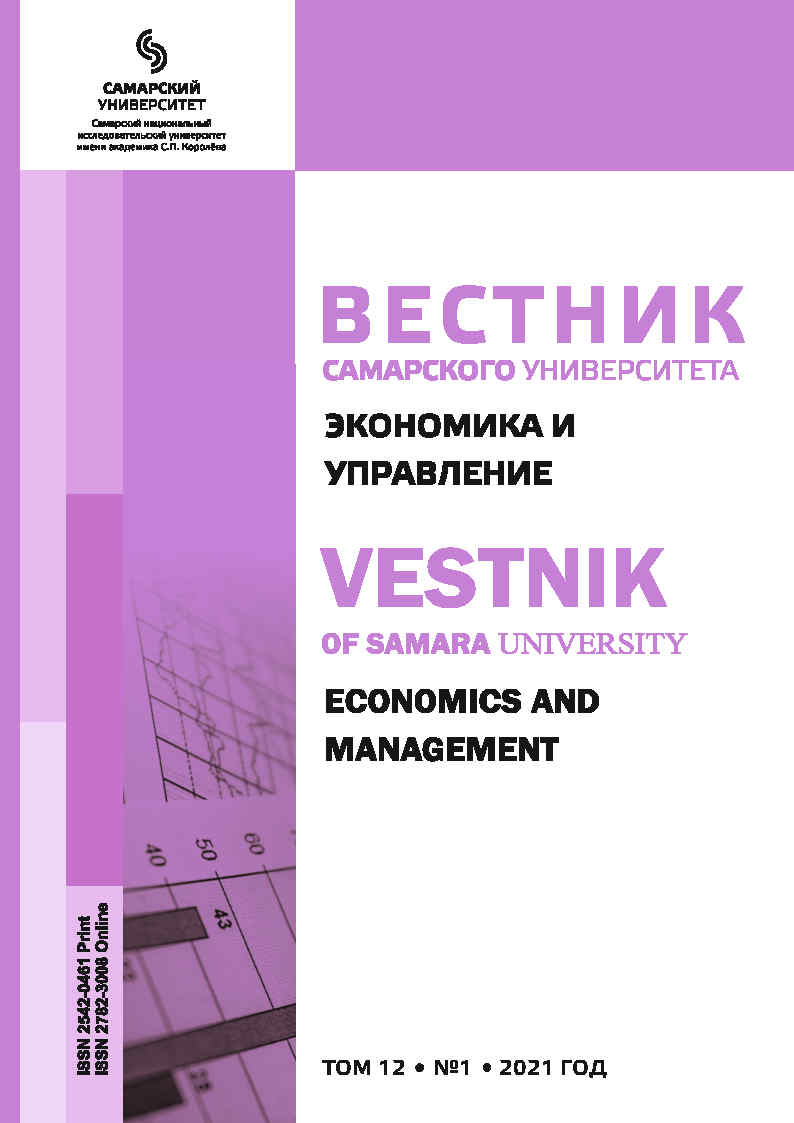Global Innovation Index (GII) 2020: место России в мире инноваций
- Авторы: Подборнова Е.С.1, Мельников М.А.1, Бердников В.А.2
-
Учреждения:
- Самарский национальный исследовательский университет имени академика С.П. Королева
- Поволжский государственный университет сервиса
- Выпуск: Том 12, № 1 (2021)
- Страницы: 37-42
- Раздел: ЭКОНОМИКА
- URL: https://journals.ssau.ru/eco/article/view/8641
- DOI: https://doi.org/10.18287/2542-0461-2021-12-1-37-42
- ID: 8641
Цитировать
Полный текст
Аннотация
На данном этапе развития мировой экономики все страны, бизнес и научные организации занимаются вопросом качественного отслеживания инновационного развития общества и экономики, изобретая для этого различные показатели, которые смогли бы наиболее комплексно оценить уровень и качество инновационного развития экономической хозяйственной единицы. В настоящее время для оценки уровня инновационного развития страны используется глобальный индекс инноваций. Global Innovation Index (GII) стимулирует и поддерживает инновационную деятельность в этот переломный период. Глобальный индекс инноваций – это мировое исследование и сопровождающий его рейтинг стран мира по показателю уровня развития инноваций. В данной статье был проведен обзор глобального индекса инноваций за период с 2015 по 2020 г. для Российской Федерации и первой 10 рейтинга на базе рейтинга 2020 года. Также был проведен анализ показателей, составляющий основные компоненты глобального индекса инноваций в России за 2020 год, выявлены слабые и сильные стороны по 7 основным компонентам. Авторами предложены основные направления развития по проблемным показателям глобального индекса инноваций Российской Федерации.
Ключевые слова
Об авторах
Екатерина Сергеевна Подборнова
Самарский национальный исследовательский университет имени академика С.П. Королева
Автор, ответственный за переписку.
Email: kate011087@rambler.ru
ORCID iD: 0000-0002-5135-7961
кандидат экономических наук, доцент кафедры экономики инноваций
Россия, 443086, Российская Федерация, г. Самара, Московское шоссе, 34.Максим Анатольевич Мельников
Самарский национальный исследовательский университет имени академика С.П. Королева
Email: melnikov_maksim@mail.ru
ORCID iD: 0000-0001-7680-3369
кандидат экономических наук, доцент кафедры экономики инноваций
Россия, 443086, Российская Федерация, г. Самара, Московское шоссе, 34.Владимир Алексеевич Бердников
Поволжский государственный университет сервиса
Email: berdanka@list.ru
доктор экономических наук, профессор кафедры «Цифровая экономика и предпринимательство»
Россия, Российская Федерация, г. Тольятти, ул. Гагарина, 4.Список литературы
- 1. Балашова С.А. О взаимосвязях показателей инновационной активности // Материалы V Международной научной конференции «Инновационное развитие и экономический рост». Москва: РУДН, 2011. C. 113–119.
- 2. Абдрахманова Г.И., Вишневский К.О., Утятина К.Е., Левен Е.И. Цифровые технологии в промышленности и ИТ-отрасли / Высшая школа экономики URL: https://issek.hse.ru/news/368076191.html (дата обращения: 15.11.2020).
- 3. Индикаторы цифровой экономики: 2020: стат. сб. / Г.И. Абдрахманова, К.О. Вишневский, Л.М. Гохберг [и др.]; Нац. исслед. ун-т «Высшая школа экономики». Москва: НИУ ВШЭ, 2020. URL: https://www.hse.ru/primarydata/ice2020.
- 4. Индикаторы цифровой экономики: 2019: стат. сб. / Г.И. Абдрахманова, К.О. Вишневский, Л.М. Гохберг [и др.]; Нац. исслед. ун-т И60 «Высшая школа экономики». Москва: НИУ ВШЭ, 2019. 248 с.
- 5. Росстат. URL: https://rosstat.gov.ru.
- 6. Гохберг Л.М. Глобальный инновационный индекс – 2020 / Л.М. Гохберг, М.А. Гершман, В.А. Рудь, Е.А. Стрельцова // Наука. Технологии. Инновации Институт статистических исследования и экономики знаний ВШЭ. 02.09.2020. URL: https://issek.hse.ru/mirror/pubs/share/396184358.pdf (дата обращения: 26.10.2020).
- 7. Маковкина С.А., Воронов Н.Д. Влияние цифровой трансформации на инвестиционную привлекательность региона // Муниципалитет: экономика и управление. 2019. № 4 (29). С. 95—103. URL: https://elibrary.ru/item.asp?id=42358414.
- 8. Мотова М.А. Состояние и проблемы развития инновационной деятельности в России // Россия: тенденции и перспективы развития. 2016. С. 309–313. URL: https://cyberleninka.ru/article/n/sostoyanie-i-problemy-razvitiya-innovatsionnoy-deyatelnosti-v-rossii/viewer (дата обращения: 26.10.2020).
- 9. Хрусталев Е.Ю., Ларин С.Н. Новые тенденции в организации партнерских отношений государства и бизнеса в инновационной сфере // Финансовая аналитика: проблемы и решения. 2011. Т. 4, вып. 34. URL: https://cyberleninka.ru/article/n/novye-tendentsii-v-organizatsii-partnerskih-otnosheniy-gosudarstva-i-biznesa-v-innovatsionnoy-sfere-1/viewer; https://www.fin-izdat.ru/journal/fa/detail.php?ID=43800.
- 10. Хрусталев Е.Ю., Ларин С.Н. Использование информационных ресурсов и технологий для стимулирования инновационного развития экономики // Национальные интересы: приоритеты и безопасность. 2011. Т. 17, вып. 32. URL: https://cyberleninka.ru/article/n/ispolzovanie-informatsionnyh-resursov-i-tehnologiy-dlya-stimulirovaniya-innovatsionnogo-razvitiya-ekonomiki/viewer; https://www.fin-izdat.ru/
- journal/national/detail.php?ID=43039.
- 11. EXPLORE THE INTERACTIVE DATABASE OF THE GII 2020 INDICATORS // Global Innovation Index. URL: https://www.globalinnovationindex.org/analysis-indicator (дата обращения: 26.10.2020).
- 12. The Innovation Union Scoreboard 2010, 2011. URL: http://www.proinno-europe.eu/metrics.
Дополнительные файлы










